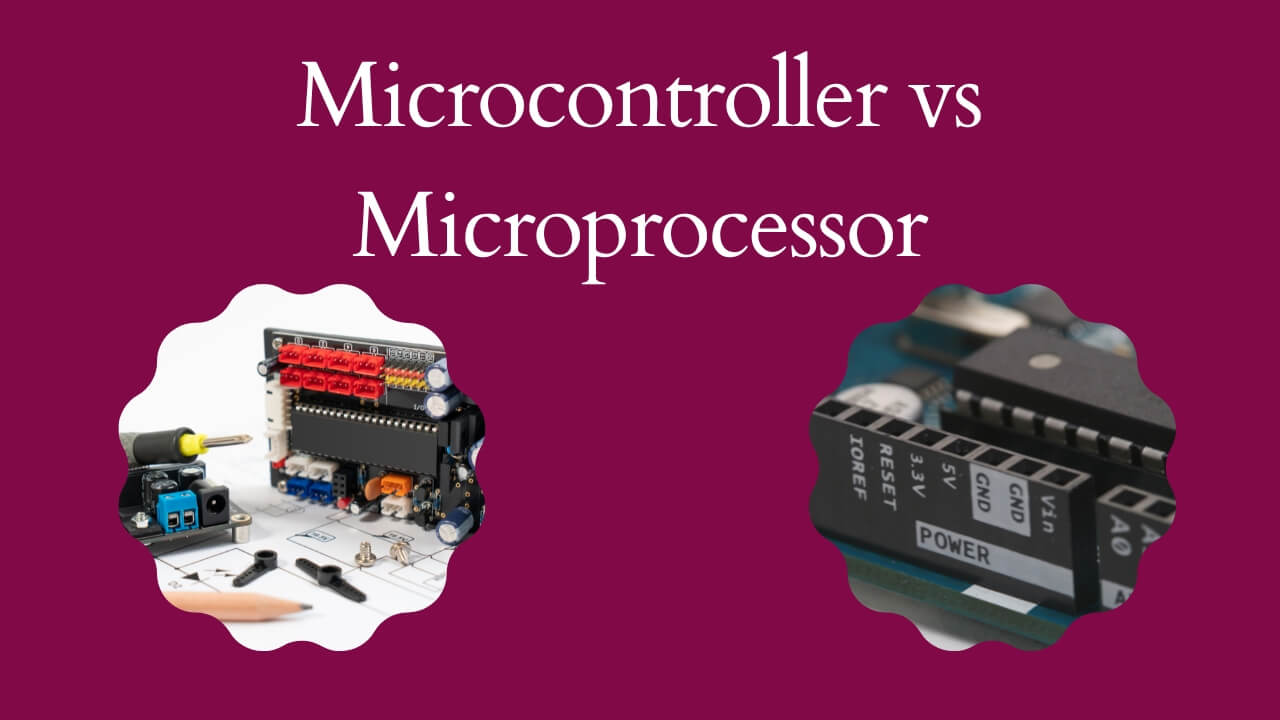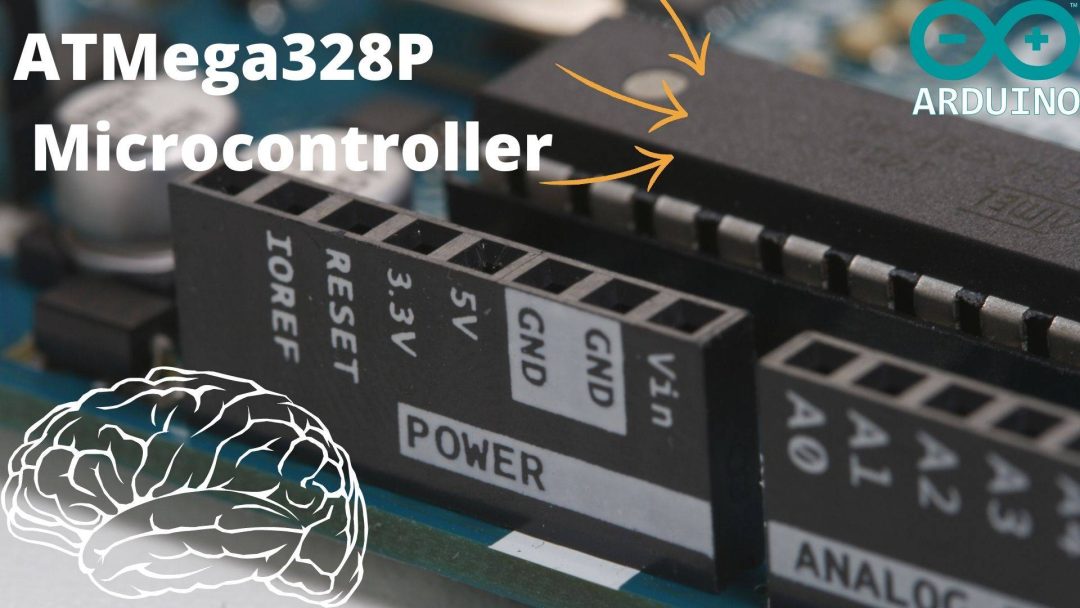Introduction

In the ever-evolving world of technology, understanding the nuances of core components like microcontrollers and microprocessors is vital. While they may seem similar, microcontrollers and microprocessors serve distinctly different purposes and are suited to various applications.
This comprehensive guide delves into the microcontroller vs microprocessor debate, unraveling their differences, similarities, and specific use cases in modern technology.
Understanding the Basics
What is a microcontroller? 
A microcontroller is an integrated circuit designed to perform specific tasks. It combines a processor with memory and input/output (I/O) peripherals on a single chip.
What is a Microprocessor?
On the other hand, a microprocessor is the brain of a computer system. It is a central processing unit (CPU) capable of performing complex computations but requires external components for memory and I/O operations.
Core Differences between Microcontroller and Microprocessor
Integration Level
- Microcontrollers integrate a CPU, memory, and I/O on a single chip.
- Microprocessors consist mainly of a CPU, requiring separate chips for memory and I/O functions.
Application Focus
- Microcontrollers are designed for specific tasks in embedded systems.
- Microprocessors are suited for general-purpose applications, such as PCs and smartphones.
Power Consumption
- Microcontrollers are typically low-power devices.
- Microprocessors consume more power and are suitable for devices where performance is a priority.
Performance and Capabilities
Processing Power
- Microcontrollers offer sufficient processing power for dedicated tasks.
- Microprocessors provide higher processing power for complex, multitasking environments.
Memory and Storage
- Microcontrollers have limited memory but are optimized for efficiency in specific functions.
- Microprocessors work with extensive memory, enhancing their multitasking capabilities.
Choosing the Right Component
Factors to Consider
- Application requirements: Specific task or general-purpose computing?
- Power consumption: Is energy efficiency a priority?
- Budget constraints: Microcontrollers are generally more cost-effective.
Industry-Specific Examples
- Automotive industry: Microcontrollers for engine control systems.
- Consumer electronics: Microprocessors in smartphones and laptops.
Future Trends in Microcontroller and Microprocessor Technology
Advancements and Innovations
- Integration of AI capabilities in both microcontrollers and microprocessors.
- Development of ultra-low-power microcontrollers for IoT devices.
The Role of Microcontroller vs Microprocessor in Emerging Technologies
- Microcontrollers in wearable tech and smart home devices.
- Microprocessors driving advancements in AI and machine learning.
Real-World Applications and Impact
Microcontrollers in Everyday Life
- Home appliances: From microwaves to thermostats, microcontrollers automate simple tasks.
- Automotive systems: Fuel injection systems and dashboard displays rely on microcontrollers for precise control.
Microprocessors Changing the World
- Computing: The backbone of personal computers, servers, and supercomputers.
- Mobile technology: Powering smartphones and tablets, enabling complex applications and connectivity.
Technical Specifications and Architecture
Architectural Differences
- Microcontrollers often use more straightforward, less power-hungry architectures.
- Microprocessors boast more advanced architectures, supporting broader instruction sets and higher speeds.
Customization and Scalability
- Microcontrollers provide limited customization options, focusing on specific tasks.
- Microprocessors offer scalability and customization, catering to various computing needs.
The Economic Perspective
Cost Implications
- Microcontrollers are cost-effective for mass-produced, specialized devices.
- Microprocessors, while more expensive, drive the performance of high-end devices.
Market Trends
- Growing demand for IoT devices boosts the microcontroller market.
- The surge in AI and cloud computing continues to fuel the microprocessor industry.
Educational and Hobbyist Applications
Learning Platforms
- Microcontrollers are ideal for educational kits and DIY projects, offering a hands-on approach to learning electronics.
- Microprocessors are used in advanced computing and programming courses, demonstrating high-level computing concepts.
Community and Resources
- A vibrant community of hobbyists and professionals share resources and projects around microcontrollers.
- Extensive online resources and forums exist for those interested in microprocessor-based system design and development.
Challenges and Limitations
Overcoming Technical Limitations
- Microcontrollers face challenges in handling complex, multi-threaded tasks.
- Microprocessors struggle with power efficiency in portable, battery-operated devices.
Future-Proofing Technology
- The race to develop more efficient, powerful microcontrollers for IoT and wearable technology.
- Advancements in microprocessor technology focus on reducing power consumption while increasing computing power.
Frequently Asked Questions (FAQs)

Q1: What is the main difference between a microcontroller and a microprocessor?
A: The main difference lies in their design and application. Microcontrollers are integrated circuits with a processor, memory, and input/output peripherals on a single chip, designed for specific control-oriented tasks. Microprocessors, however, are a computer system’s central processing units (CPUs) and require external chips for memory and input/output functions. They are suited for general-purpose applications and complex computations.
Q2: Can microcontrollers handle complex tasks like microprocessors?
A: Microcontrollers are designed for specific, control-oriented tasks and usually do not have the processing power and memory capacity to handle complex, multi-threaded tasks like microprocessors. They are optimized for efficiency and low power consumption in dedicated applications.
Q3: Why are microprocessors more expensive than microcontrollers?
A: Microprocessors are more expensive due to their complex architecture, higher processing power, and the need for additional components for memory and input/output operations. They are designed for high-performance computing, which requires more advanced technology and incurs higher costs.
Q4: Are microcontrollers only used in small devices?
A: While microcontrollers are commonly used in small devices due to their compact size and integrated design, they are also crucial in larger systems, such as automotive control systems, industrial machines, and home automation systems, where specific, repetitive tasks need to be controlled efficiently.
Q5: Can a microprocessor be used in place of a microcontroller?
A: Technically, a microprocessor can be used instead of a microcontroller, but it may need to be more cost-effective and efficient. Microprocessors are designed for general-purpose computing and may be overkill for applications that require simple, dedicated control tasks, which are the forte of microcontrollers.
Q6: How do advancements in technology affect microcontrollers and microprocessors?
A: Advancements in technology are leading to more powerful, efficient, and smaller microcontrollers and microprocessors. Innovations in areas like AI integration, low-power operation, and increased processing capabilities continue to expand the potential applications and efficiency of both types of devices.
Conclusion

The article Microcontroller vs Microprocessor: The Core of Modern Technology delves into the fundamental differences, applications, and impacts of microcontrollers and microprocessors in the tech world.
While microcontrollers are integral in specific, control-oriented tasks and embedded systems, microprocessors are the driving force behind general-purpose computing and complex operations.
Understanding their distinctions, strengths, and limitations is crucial in modern technology, where both play vital roles in shaping the efficiency, functionality, and innovation of digital devices and systems.
As technology evolves, so will the capabilities and applications of microcontrollers and microprocessors, continually transforming the landscape of the digital world.
